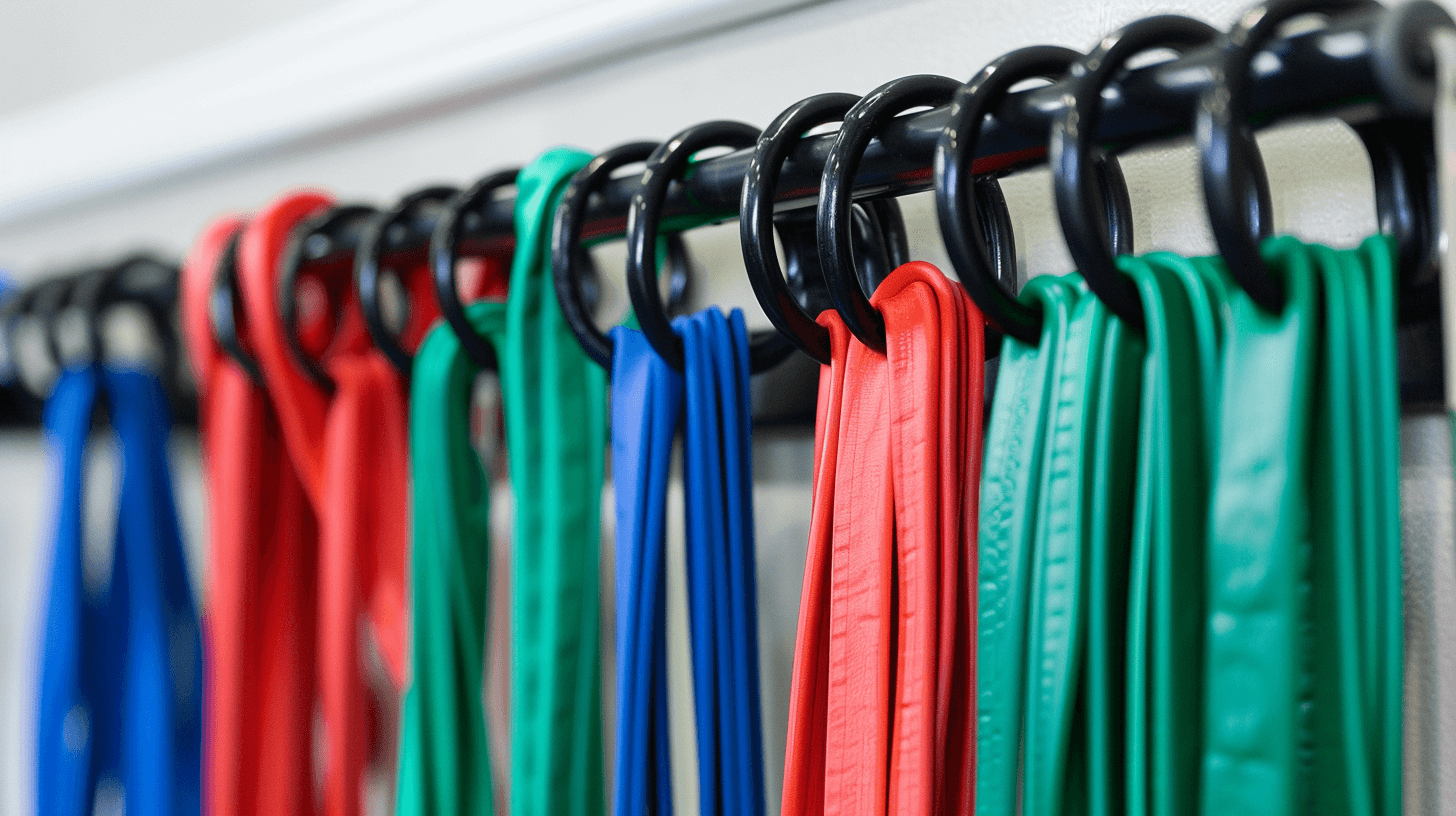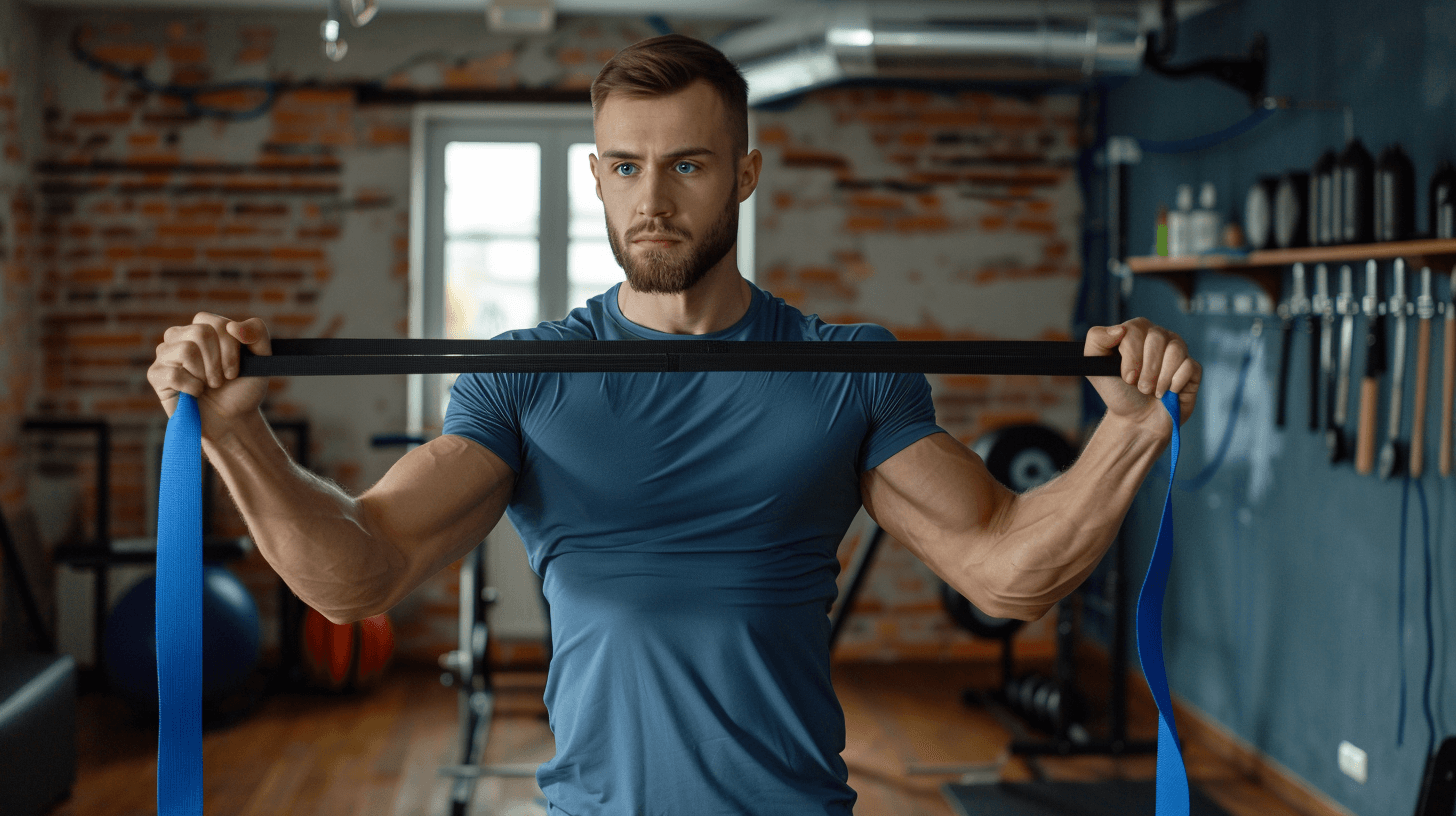Rotator Cuff Surgery Recovery: What to Expect & How to Heal


Rotator cuff surgery is a common procedure that can help restore shoulder function and alleviate pain caused by rotator cuff injuries. Recovery from this surgery is a gradual process, with various stages focusing on different aspects of healing and rehabilitation.
Rotator cuff surgery is a common procedure that can help restore shoulder function and alleviate pain caused by rotator cuff injuries. Recovery from this surgery is a gradual process, with various stages focusing on different aspects of healing and rehabilitation.
By understanding the key stages of shoulder surgeries and recovery, and taking the necessary steps to prepare and heal, you can maximize your chances of a successful outcome and return to your daily activities and sports with renewed strength and confidence.
Key Takeaways
Rotator cuff surgery recovery involves 4 stages, from immobilization to strength training.
Professional preparation and physical therapy are essential for successful healing, while pain management strategies can help reduce inflammation.
Adhering to gradual proper lifting techniques and incorporating strengthening exercises can protect against future injuries.
What Is Rotator Cuff Surgery?

Recovering from rotator cuff surgery takes time, patience, and a step-by-step plan. The healing journey typically moves through four key stages—each with its own goals and challenges.
Immobilization
Passive motion
Active motion
Strength training
Each phase contributes significantly to the comprehensive recovery process, enabling gradual restoration of shoulder function and strength.
As you advance through these phases, complying with your surgeon’s directives and participating in physical therapy is extremely important. Sticking to the suggested rehabilitation program can lead to a smoother recovery and minimize the likelihood of complications or re-injury.
Immobilization (0-4 weeks)
The first stage of recovery, immobilization, focuses on:
Protecting the surgical repair and facilitating healing, including the formation of scar tissue
Wearing a sling to immobilize, support, and protect your shoulder joint
Limiting movements that could cause strain on the repaired tendon
The size and type of your rotator cuff tear, whether it is a small tear or complete one, will greatly impact your recovery time. By adhering to your surgeon’s instructions and maintaining immobilization during this crucial stage, you'll lay the foundation for a successful recovery process. It's important to be aware of rotator cuff tear symptoms to ensure proper healing and avoid complications.
Around the 4-6 weeks mark, your surgeon will typically advise you to stop using the sling and initiate the following recovery phase: passive motion. This transition marks an encouraging advancement toward restoring shoulder function and strength.
Passive Motion (4-6 weeks)

The passive motion stage of recovery involves the introduction of gentle, therapist-assisted exercises that aim to gradually improve your shoulder’s range of motion without putting excessive strain on the repaired tendon. Your physical therapist will guide you through exercises such as forward elevation, external rotation, and abduction within a comfortable range, aiming to reduce joint stiffness and promote flexibility. These exercises, combined with the expertise of your therapist, will help you regain range of motion and pave the way for the next stage of your recovery process.
As you advance through the passive motion phase, keep in mind that your shoulder is still recuperating. Although these exercises aim to enhance mobility, it is paramount to:
Avoid excessive strain
Adhere to your therapist’s advice
Promote effective healing
Avert complications
Active Motion (6-8 weeks)

Once you've successfully completed the passive motion stage, it’s time to move on to active motion. This stage of recovery involves progressing to active exercises that increase shoulder mobility and function while still avoiding heavy lifting or strenuous activities. Your physical therapist will continue to guide you through exercises that challenge your shoulder’s range of motion without causing undue strain on the healing repair.
During this stage, it's important to monitor your progress and communicate with your healthcare providers to ensure that your shoulder is healing properly. By staying patient and diligent with your exercises, you will continue to build strength and mobility in your shoulder, preparing you for the final stage of recovery: strength training.
Strength Training (8-12 weeks)

The strength training stage of rotator cuff surgery recovery is all about building power in your shoulder muscles. During this stage, you'll engage in targeted exercises that focus on gradually increasing the strength of the muscles surrounding the shoulder joint. It's crucial to progress slowly and avoid overexertion to ensure that your shoulder muscles aren't overworked and the healing process isn't hindered.
By the conclusion of this phase, you should typically regain sufficient shoulder strength within six months. As you complete your strength training, continue to consult your healthcare providers and physical therapist to gauge when it is safe to resume work, daily chores, and sports activities.
Tips for Preparing for Surgery
Proper preparation for rotator cuff surgery can positively impact your recovery process. Ensuring that your mind and body are ready for surgery can help reduce stress, set realistic expectations, and create a supportive environment for healing. There are several measures you can take to prepare for surgery, both mentally and physically.
One such measure is the Ready Set Recover program, an innovative wellness platform for surgery preparation and recovery that focuses on both the mind and body. This program can help you create a framework for building healthy habits and improving outcomes following surgery. Additionally, you may consult with your healthcare providers for personalized guidance and recommendations on preparing for surgery.
Factors Affecting Recovery Time
Various factors can alter the recovery duration post rotator cuff surgery. Elements like age, general health, and the severity of the rotator cuff tear can affect the pace and success rate of your recovery. For instance, patients with better overall health may experience a quicker recovery, while those with underlying health conditions may have a slower recovery process. Adherence to your surgical team’s instructions and engaging in physical therapy are crucial for optimizing your healing journey.
It's important to remember that each person’s recovery process is unique, and what works for one individual may not work for another. So try not to get discouraged if your recuperation doesn't strictly adhere to the timelines discussed either here or by your surgeon. Lastly, by staying committed to your rehabilitation program and keeping open lines of communication with your healthcare providers, you can ensure the best possible recovery outcome.
Pain Management After Rotator Cuff Surgery
Pain management is a key consideration following rotator cuff surgery, since it can significantly impact your comfort and overall recovery experience. Several strategies can help you manage postoperative pain, including medication, ice therapy, and relaxation techniques. Your healthcare providers may prescribe a combination of narcotic and non-narcotic medications to help alleviate pain and reduce inflammation.
Ice therapy has also been shown to be effective for pain management after rotator cuff surgery, as it can minimize swelling and provide accessible relief. Additionally, relaxation exercises and proper shoulder elevation can help manage pain and promote healing. It's a good idea to maintain close coordination with your team if you feel your pain is more than expected or prolonged.
Physical Therapy for Rotator Cuff Surgery Recovery

Physical therapy is a key player in the recovery process after rotator cuff surgery. A systematic physical therapy program can aid in restoring range of motion, enhancing strength, and averting future injuries. The frequency and length of physical therapy sessions will be tailored according to your personal needs and progress.
By collaborating with a certified physical therapist, you can ensure that you receive the appropriate guidance and support required to progress through each recovery stage safely and efficiently. Physical therapy is essential for achieving a successful outcome and helping you return to your daily activities, work, and sports.
Goals of Physical Therapy
The primary objectives of physical therapy following rotator cuff surgery are:
Incrementally improve shoulder range of motion
Maintain secure tendon to bone attachment
Recover shoulder mobility
Reinforce muscles
Reduce swelling and pain
During each stage of recovery, your physical therapist will work with you to achieve these goals through a combination of exercises, stretches, and pain management techniques.
Physical therapy is essential for improving strength and range of motion after rotator cuff surgery, as well as preventing future injuries. By following a structured rehabilitation program under the guidance of a skilled physical therapist, you can ensure the best possible outcome for your recovery.
Frequency and Duration of Sessions
The frequency and duration of physical therapy sessions after rotator cuff surgery are tailored to your individual needs and progress. Typically, it's recommended that you attend physical therapy sessions 2-3 times per week for a period of approximately 3 months. The physical therapy program typically requires three to four months to complete.
Modifications can be made to your physical therapy sessions to accommodate your progress in arthroscopic rotator cuff surgery recovery. As you advance through the stages of recovery, your physical therapist will incrementally increase the intensity of activity and range of motion exercises, ensuring that your progress aligns with the healing process and the strain on the affected tissue.
At-Home Exercises
In addition to in-person physical therapy sessions, your therapist will provide you with exercises to perform at home. These at-home exercises can help you maintain progress with your shoulder therapy and facilitate continued healing. Some recommended equipment for post-rotator cuff surgery exercises at home includes:
Small weights or weighted therapy balls
Resistance bands
Shoulder pulleys
Performing at-home exercises after rotator cuff surgery offers several advantages, including:
Enhanced overall upper extremity function
Accelerated recovery
Augmented strength and stability
A progressive return to daily activities
By incorporating these exercises into your daily routine, you can continue to build strength and mobility in your shoulder, paving the way for a successful recovery.
Returning to Daily Activities and Sports
Resuming daily activities, work, and sports after rotator cuff surgery marks a significant milestone in the recovery journey. The timing of when you can safely resume these activities depends on several factors, including the type and extent of the surgery, your individual healing process, and your adherence to rehabilitation protocols. It's always a good idea to discuss what sports you like to play or physical activities you enjoy, because that may help determine specific exercises to focus on for your rehab.
In any case, it’s typically recommended that you wait a minimum of 3 months before returning to sports after rotator cuff surgery to ensure your shoulder has adequate time to heal and regain strength. As you prepare to return to your normal routine, consult with your healthcare providers and physical therapist for guidance on safely resuming these activities without risking re-injury or complications.
Potential Complications and How to Address Them
Although rotator cuff surgery is generally considered a safe procedure, potential complications like nerve injury, infection, or re-tearing of the rotator cuff tendon can occur, which may lead to a rotator cuff injury. It is important to be aware of these possible complications and take the necessary steps to address and prevent them.
In case of a failed rotator cuff repair, the probability of success with additional rotator cuff repair surgery depends on the size of the rotator cuff tears and tendon tears at the time of the additional surgery. As the tear increases in size, the likelihood of successful repair decreases. Consult with your healthcare providers to discuss the best course of action for addressing any complications that may arise during your recovery process.
Tips for Preventing Future Rotator Cuff Injuries
Maintaining shoulder health and preventing future rotator cuff injuries is vital for enjoying an active and pain-free lifestyle. By adhering to proper lifting techniques, participating in regular exercise, and maintaining good posture, you can substantially lower your risk of re-injury.
Incorporating exercises such as:
Doorway stretches
High to low rows
Reverse flys
Lawn mower pulls
Always try to maintain proper form. Incorporating the upper arm bone into your exercise routine can help strengthen the muscles around the rotator cuff and improve shoulder stability. By taking these proactive steps to prevent future injuries, you can protect your shoulder and maintain your overall health and well-being.
Rotator Cuff Surgery Recovery: Get the Help You Need
Rotator cuff surgery recovery is a gradual process that requires patience, dedication, and proper guidance. By understanding the stages of recovery, engaging in physical therapy, and following your healthcare providers’ recommendations, you can maximize your chances of a successful outcome. As you progress through the stages of recovery and eventually return to your daily activities, work, and sports; remember the importance of maintaining shoulder health and preventing future injuries. With the right approach and mindset, you can emerge from this challenging journey stronger and more resilient than ever before.
Frequently Asked Questions
How long will I be off work after rotator cuff surgery?
It's recommended to take at least 1 week off of work after your rotator cuff repair procedure; however, depending on your job’s physical labor requiring the use of your shoulder, that should be factored in as to when you return as well.
How painful is rotator cuff surgery recovery?
Rotator cuff surgery recovery can be quite painful, lasting for at least six months.
Can I drive 2 weeks after rotator cuff surgery?
It's not recommended to drive 2 weeks after rotator cuff surgery as orthopedic advice traditionally suggests a 4-6 week waiting period.
How long before you can lift after rotator cuff surgery?
Generally, other than light weights used for physical therapy, you should not lift heavier weights until 4-6 months after rotator cuff surgery. Make sure to consult your doctor before returning to heavy lifting.
How long does it take for a torn rotator cuff to heal without surgery?
With minor tears, proper rest and recovery can help a rotator cuff heal in four to six weeks. However, worse injuries or insufficient care may prevent the tear from healing on its own.
When is it too late for rotator cuff surgery?
If the tear is massive, long-standing, or has led to severe muscle degeneration, surgery might not be effective. In such cases, doctors may recommend pain management or shoulder replacement instead.







